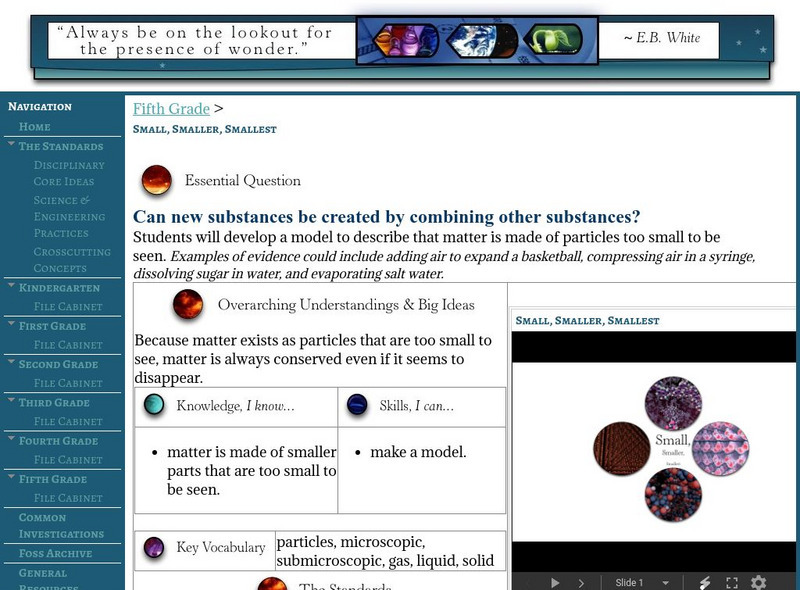Alabama Learning Exchange
Alex: Bubble Bubble
This lesson will help young students understand the shape and movement of bubbles. Students will predict, practice, and record results as they blow bubbles with different-shaped objects.
Better Lesson
Better Lesson: Ways to Classify Objects
Students often classify objects by size and shape. Now they will look more at the properties of objects such as hardness, flexibility, and texture. Included in this lesson are examples of student's science journal entries, a video of the...
Alabama Learning Exchange
Alex: How Sweet It Is
As part of the study of Matter, the students will determine the density of standard percent sugar solutions through hands on experimentation. In laboratory groups, students will graph a standardized curve of the experimental data. The...
PBS
Pbs Learning Media: The Ruff Ruffman Show: Teacher's Guide: Kitchen Chemistry
Learn about kitchen chemistry alongside Ruff Ruffman. Students can use the videos, games, and activities from The Ruff Ruffman Show to discover how by investigating solids and liquids and exploring heating and cooling, science can help...
Alabama Learning Exchange
Alex: Translucent, Transparent, and Opaque Objects
Students will become familiar with transparent, translucent, and opaque objects. Students predict whether items are transparent, translucent, or opaque. Finally, students will show what they have learned by producing a song, poem, cheer,...
McREL International
Mc Rel: Whelmer #10 Learning Activity: Singing Rod
An easy to do activity that investigates the simple observable properties of sound waves. The activity is presented in lesson plan format that meets NSES standards.
National Academies of Sciences, Engineering, and Medicine
National Academies Press: Small, Smaller, Smallest
View these slides to better understand that matter is made of smaller parts that are too small to be seen. These slides can be used to meet math, science, and literacy standards.
Science Education Resource Center at Carleton College
Serc: Investigating Plastic Polymers: Building a Model
Students will use their prior knowledge about changes of matter including physical and chemical changes from the Houghton Mifflin science curriculum. Students will create a hypothesis to test the physical properties of materials such as...






